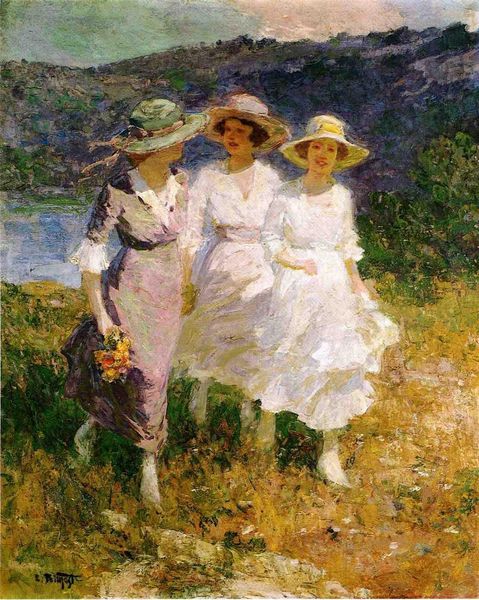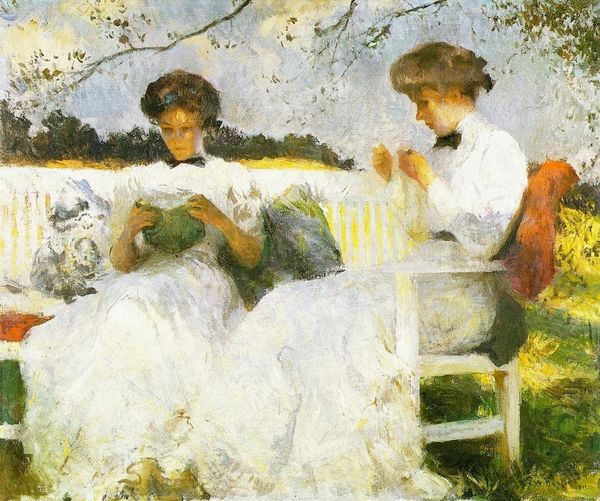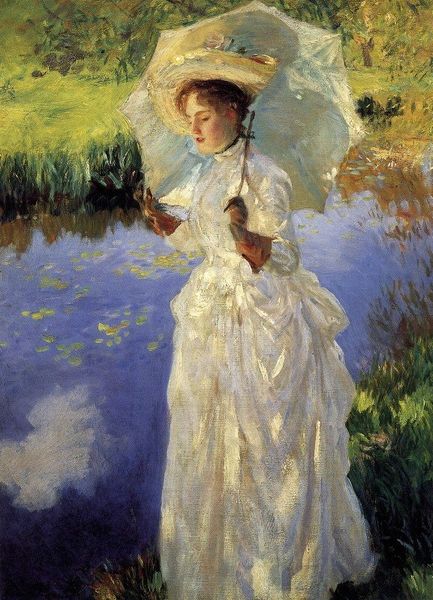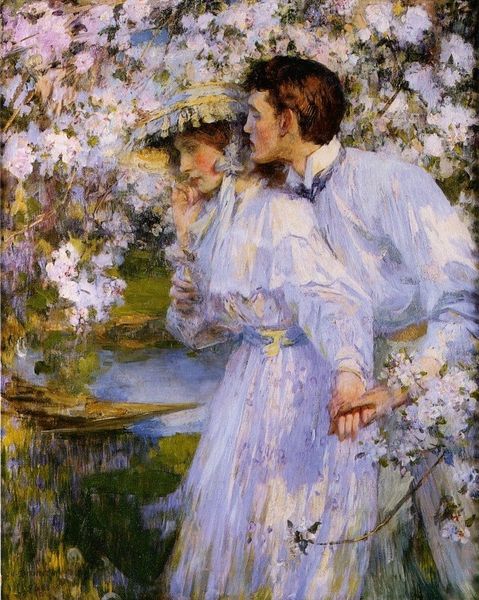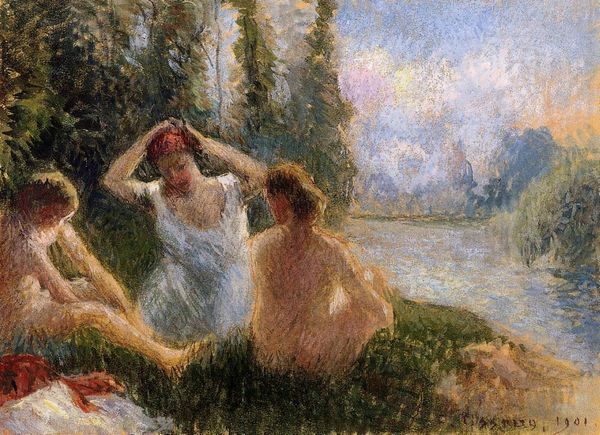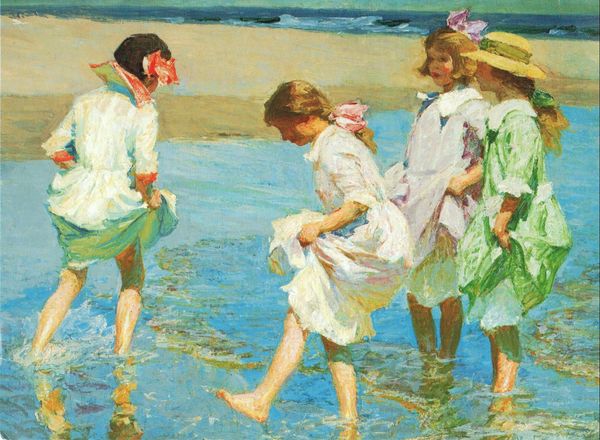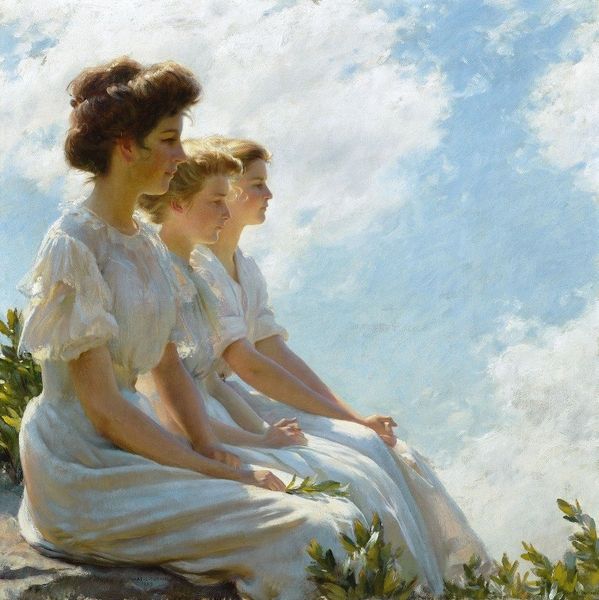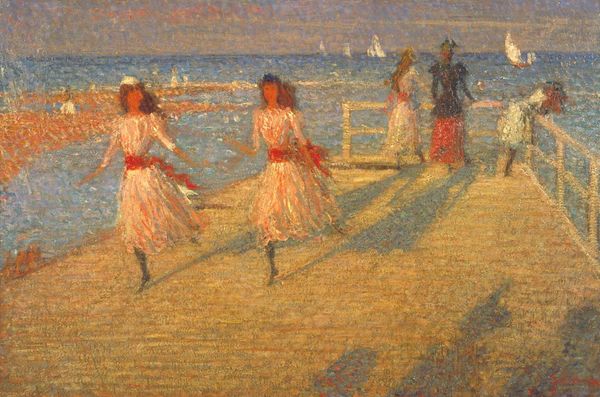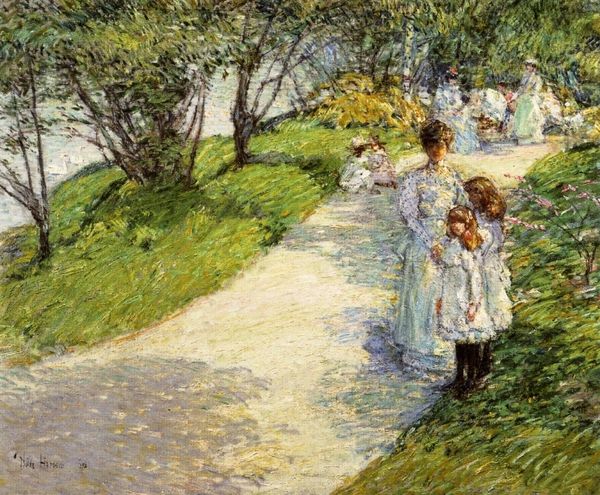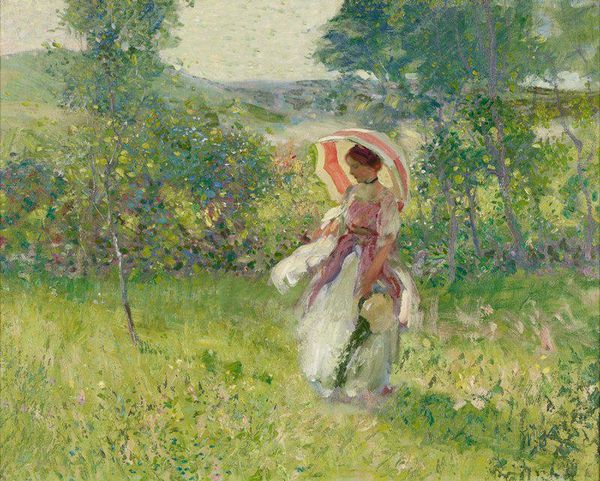
painting, plein-air, oil-paint
#
gouache
#
painting
#
impressionism
#
plein-air
#
oil-paint
#
landscape
#
oil painting
#
group-portraits
#
watercolor
Copyright: Public domain
Curator: The warm light in this painting, "The Sisters" from 1889, is instantly striking, bathing the scene in a summer glow. Frank W. Benson's work captures two young girls by the sea, and it immediately evokes a sense of carefree joy. Editor: Absolutely. You can almost feel the heat radiating off the canvas. I'm interested in how Benson employed plein-air techniques here. You can tell by the very visible brushstrokes, particularly in the rendering of the golden field—the very deliberate marks capture the shimmering quality of the light hitting each blade of grass. I’d be keen to understand more about what sort of oil-paint and brush he was using, what would the effect of its materiality have been on production? Curator: Considering that Benson, during the late 19th century, had affiliations with institutions such as the Ten American Painters—it's plausible he sought to present an image of domestic tranquility during a period of social change. Notice how their white dresses serve a class marker? Editor: Exactly, while this artwork evokes the golden summers of late nineteenth century Americana it's important to examine Benson’s creative process too. The layering of paint and use of contrasting hues create depth and movement, while the social positioning of the girls should not be overlooked. These paintings aren't solely the creation of artists, but, institutions too. Was this scene manufactured through labor? I’m keen to dive deeper into Benson’s techniques. Curator: Well, it seems clear that his method helped construct a world where leisure was made readily available to members of a specific community during that era. And what institutions enabled him, is that really a focus? Editor: Museums certainly shaped artistic reputations and facilitated production. That institutional validation influenced how art was consumed by the public. It allowed for the kind of class and family dynamics we see expressed here. And what exactly are the figures within "The Sisters" supposed to represent—and how did their positioning serve a political means? Curator: This exploration of materials and techniques combined with its historical framing gives us a broader view into the making and meaning behind this delightful summer scene. Editor: Agreed. Considering both the method of manufacture and social and political contexts give viewers diverse vantage points, from Benson’s studio to the cultural landscape of his era.
Comments
No comments
Be the first to comment and join the conversation on the ultimate creative platform.
